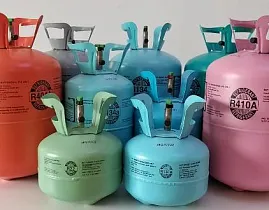
The EFCTC submission to the call for evidence on Per- and Poly Fluorinated Alkyl Substances (PFASs) [1] provides a comprehensive package of information that builds on the EFCTC position paper “Per- and Polyfluoroalkyl Substances: HFCs and HFOs a distinct subset” [2].
While HFCS and HFOs are covered by the definition of PFAS used for this survey, they do not exhibit the properties of the group of substances that are more commonly considered as PFAS (organic fluorinated substances with a C6 core or higher). As demonstrated in the EFCTC submission, the HFCs and HFOs substances do not meet the criteria for persistency as set out in REACH Regulation Annex XIII [3].
An extensive body of research is included in the submission concerning the environmental fate of the substances. All the substances degrade in the natural environmental and the mechanisms and degradation products are generally known, including their atmospheric lifetimes. The final degradation products are all substances that have occurred naturally in the environment for probably millions of years.
The OECD report [4] that developed the list of over 4700 PFAS substances referenced in the call for evidence, notes that “ According to the currently most accepted terminology (Buck et al., 2011), per- and polyfluoroalkyl substances (PFASs) are a family of anthropogenic chemicals that “contain one or more C atoms on which all the H substituents (present in the nonfluorinated analogues from which they are notionally derived) have been replaced by F atoms, in such a manner that they contain the perfluoroalkyl moiety (CnF2n+1–).”
In conclusion, EFCTC takes the view that any regulatory action should be at the HFC and HFO subset or individual substance level and not at the PFAS group level and should be based on sound scientific evidence that takes into account specific structures and properties. Consequently, EFCTC concluded that it would make sense to exclude this group of substances from the broad scope of this Risk Management Option Assessment.
References
[1] The national authorities of Germany, the Netherlands, Norway, Sweden and Denmark invite interested parties to send in evidence and information on the use of per- and polyfluoroalkyl substances (PFAS) by 31 July 2020. For further information see https://echa.europa.eu/sv/-/five-european-states-call-for-evidence-on-broad-pfas-restriction.
[2] EFCTC position paper “Per- and Polyfluoroalkyl Substances: HFCs and HFOs a distinct subset” February 2020 can be downloaded here.
[3] REACH Regulation (EC) No 1907/2006 Annex XIII Criteria for the identification of persistent, bioaccumulative and toxic substances, and very persistent and very bioaccumulative substances.
[4] May 4, 2018 published report Toward a New Comprehensive Global Database of Per and Polyfluoroalkyl Substances (PFASs): Summary Report on Updating the OECD 2007 List of Per and Polyfluoralkyl Substances (PFASs), Series on Risk Management





